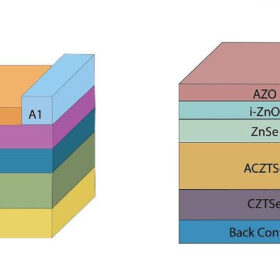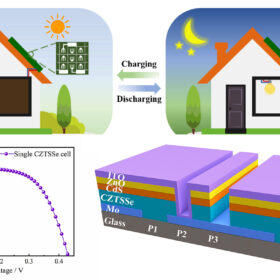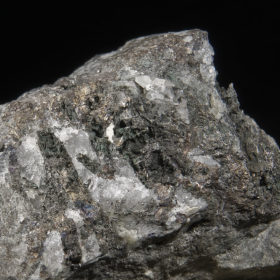New kesterite solar cell design promises 29.37% efficiency
Researchers in China and Malaysia simulated a new structure for copper zinc tin sulphide (CZTS) cells featuring a tungsten oxide buffer layer and a back surface field kesterite layer. A device simulated with this configuration achieved an open circuit voltage of 1.2 V and a fill factor of 83.37%.
New design for kesterite-kesterite tandem solar cells promises 24% efficiency
Scientists in China have designed a kesterite-kesterite solar cell with an optimized structure that may potentially achieve efficiencies nearing those of crystalline silicon PV devices. They improved the performance of the two subcells by adjusting band alignment at interfaces, selecting proper buffer layers, and adding a double layer to both devices.
New solar window prototype based on kesterite photovoltaic cells
A research team in China combined solar power generation from kesterite thin-film generation with a nickel-cobalt bimetal oxide (NiCoO2) electrochromic window. The proposed prototype not only realizes the function integration of self-power and intelligent solar radiation adjustment, but also extends its function to energy storage.
New selenization process paves way for 14%-efficient kesterite solar cells
Scientists in China claim to have gauged the selenization annealing process for kesterite solar cells, in order to achieve a kesterite absorber with low defects. They have developed a device with a certified efficiency of 13.8%.
Kesterite solar cell with transparent electrode achieves 11.4% efficiency
Chinese researchers fabricated a kesterite PV device using a transparent fluorine-doped tin oxide (FTO) substrate instead of substrates based on opaque Mo-coated soda lime glass. The cell has an open-circuit voltage of 0.522 V, a short-circuit current of 33.0 mA cm−2, and a fill factor of 68.55%.
Cadmium-free kesterite solar cell with 9.7% efficiency
Researchers in China developed a new kesterite solar cell they say has improved efficiency and stability. The device was able to retain around 90% of its initial efficiency after 100 days without encapsulation.
Kesterite solar cell with 11.76% efficiency via aluminum oxide passivation layer
The solar cell was built with Al2O3-incorporated CZTSSe absorbers using aqueous spray pyrolysis in ambient air. It achieved an open-circuit voltage of 0.469 V, a short-circuit current of 36.96 mA cm2, and a fill factor of 67.25%.
Cadmium-free kesterite solar cell with 9.82% efficiency
Researchers in South Korea have fabricated a cadmium-free heterojunction kesterite solar cell based on a zinc sulfide oxide Zn(O,S) buffer layer. They used a one-minute ammonium sulfide (NH4)2S treatment process for surface cleaning and passivation of the cell’s CZTSSe absorber.
Flexible bifacial kesterite solar cell at 9.3% efficiency
Scientists in China developed a new kesterite solar cell they say could be suitable for indoor or outdoor applications. The bifacial solar cell reached 9.3% frontside efficiency, and also achieved a 9.0% on the backside.
New manufacturing method for kesterite solar cells
German scientists have designed a manufacturing process to reduce the thickness of the molybdenum diselenide interface layer in kesterite solar cells. They used two different configurations of silicon-oxynitride diffusion-barrier layers.










